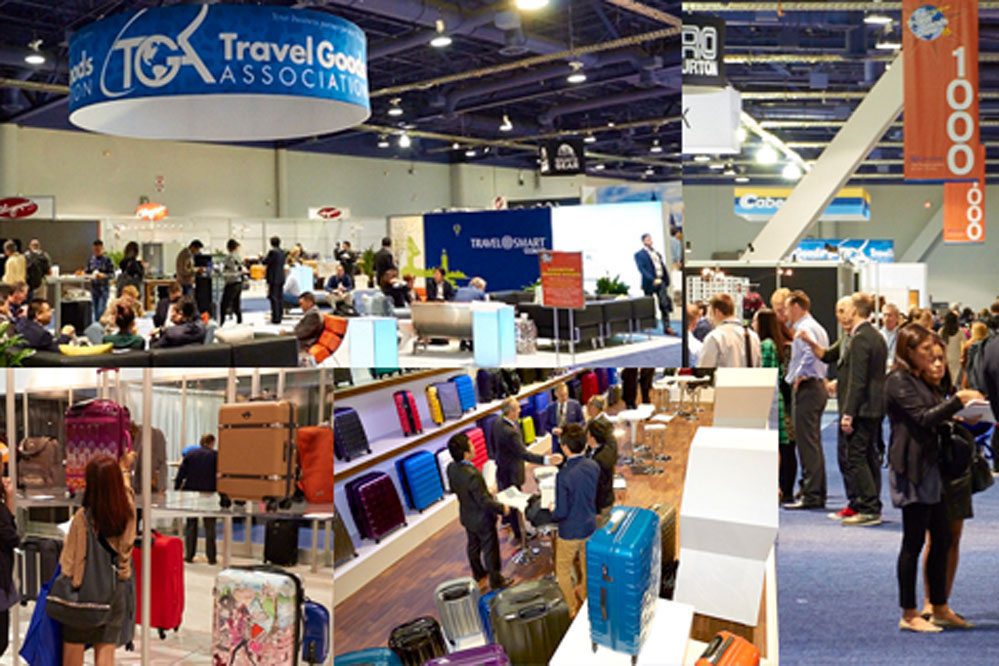Skift Take
At this year's annual travel goods industry conference, it's obvious that the hot trend among manufacturers is to add USB ports, battery packs, and location-aware beacons to their luggage.
As the U.S. Travel Good Association’s annual show takes place April 5–7 in Las Vegas, it is apparent that many manufacturers are doubling down on the industry’s bet that consumers want luggage that is tech-savvy.
The bet is understandable. Ever since Bluesmart, the maker of high-tech luggage, more or less pioneered the “internet-connected luggage” category in 2014 and sold 40,000 units (to date), the concept has been widely imitated by other manufacturers — in bits and bobs.
The gimmicks seem to work. Last year luggage sales in the U.S. rose four percent, according to market researcher NPD Group. That was a better showing than the sector’s average during the past several years. It was also a better performance than what many other retail products turned in last year.
A case in point of success in 2016: Hong Kong-based Samsonite, the largest of the luggage makers, saw its sales rise 17 percent, year-over-year, to $2.8 billion.
The future looks bright, too. The business and casual luggage sector worldwide is forecast to grow an average of seven to eight percent a year during the next few years, according to Technavio‘s market research.
The modest growth comes at a time of change for the previously staid luggage industry.
Last year, Samsonite bought smaller rival Tumi for about $1.8 billion.
Also last year, mid-market luggage leader TravelPro was acquired by private equity firm MidOcean Partners. While the terms of the transaction were not disclosed, it did receive a $58 million credit facility to facilitate the deal.
Against the backdrop of consolidation (which is expected to continue), Travelpro, Samsonite, and other major manufacturers are continuing to place bets on technological gimmickry to help sell their bags.
Boca Raton, Florida-based Travelpro is debuting this year the Travelpro 11, a carry-on soft duffel bag that includes an external USB port.
Similarly, British-brand luggage maker Antler is unveiling Titus DLX carry-ons that will now include a USB port, to enable travelers to charge devices via a battery pack inside the suitcase while on the move.
French-brand Delsey, which says it sells a bag every 10 seconds, on average, is rolling out its first connected bag, with similar features to the above-mentioned ones. It’s calling the new luggage series Pluggage.
Toronto-based Heys launches this year a line of “smart luggage.” Each bag has a built-in weight scale. There’s also a mini-radio signal that is broadcast to Apple and Android smartphones, to help pinpoint a bag’s proximity at various moments. Users can also remotely lock or unlock the luggage with a mobile app.
Samsonite, for its part, is continuing to prototype what it calls a Track&Go Concept Case, which would use a Bluetooth low-energy beacon signal to communicate with an owner’s smartphone about its location at various points in its journey.
Last year, two entrepreneurs launched Away, a luggage startup that they say has already recorded sales of $12 million. Away says it has already sold more than 50,000 suitcases, a possible record for a new entrant into the luggage game.
Away says it has gained traction partly due to an effective Instagram marketing campaign, but also because its bags ride the techie trend by including a battery that can charge a smartphone five times until it needs recharging on its own.
The Daily Newsletter
Our daily coverage of the global travel industry. Written by editors and analysts from across Skift’s brands.
Have a confidential tip for Skift? Get in touch
Photo credit: The annual International Travel Goods Show opened in Las Vegas on April 5, 2017 with much news about tech-enabled bags. Travel Goods Association
